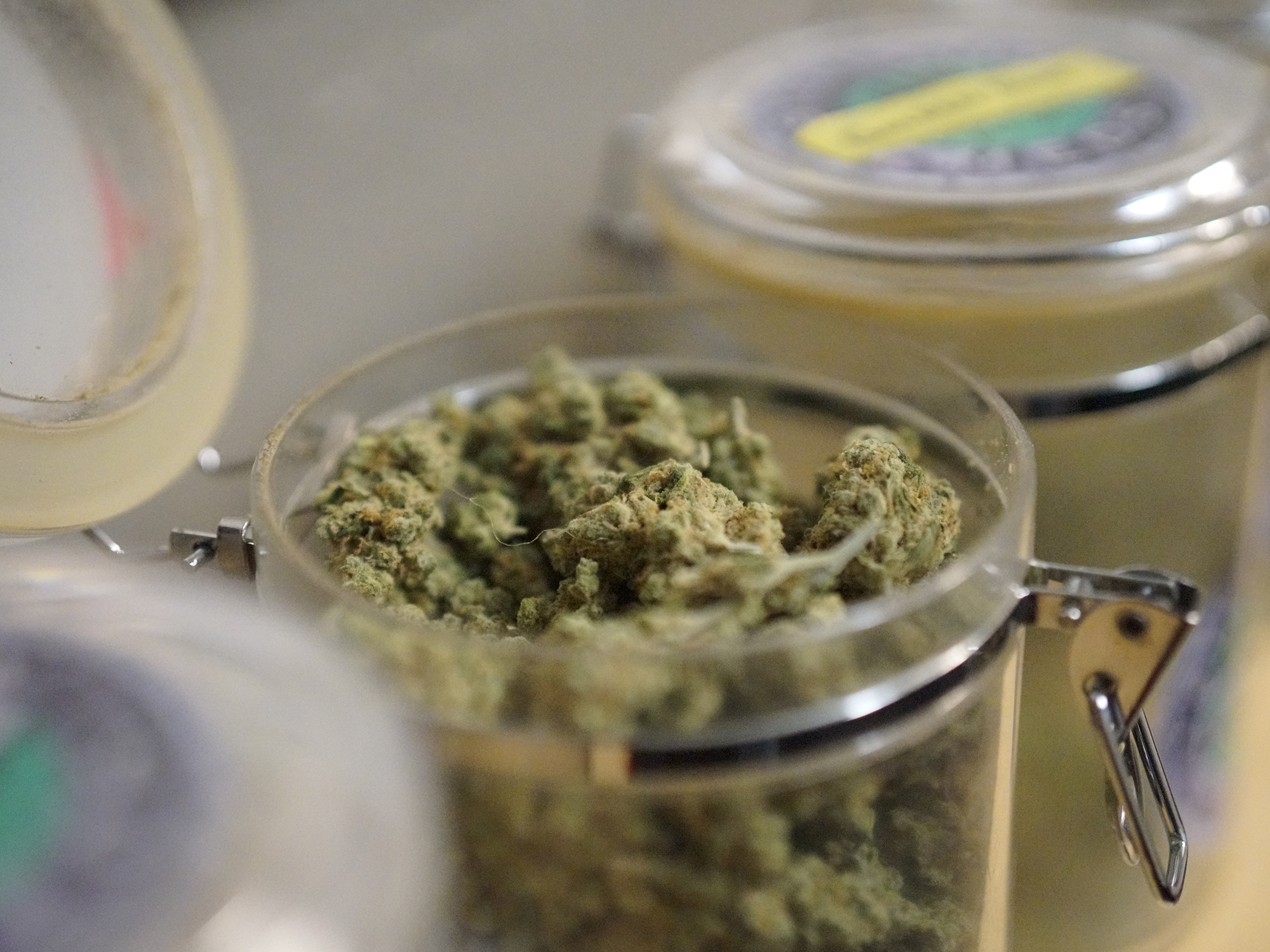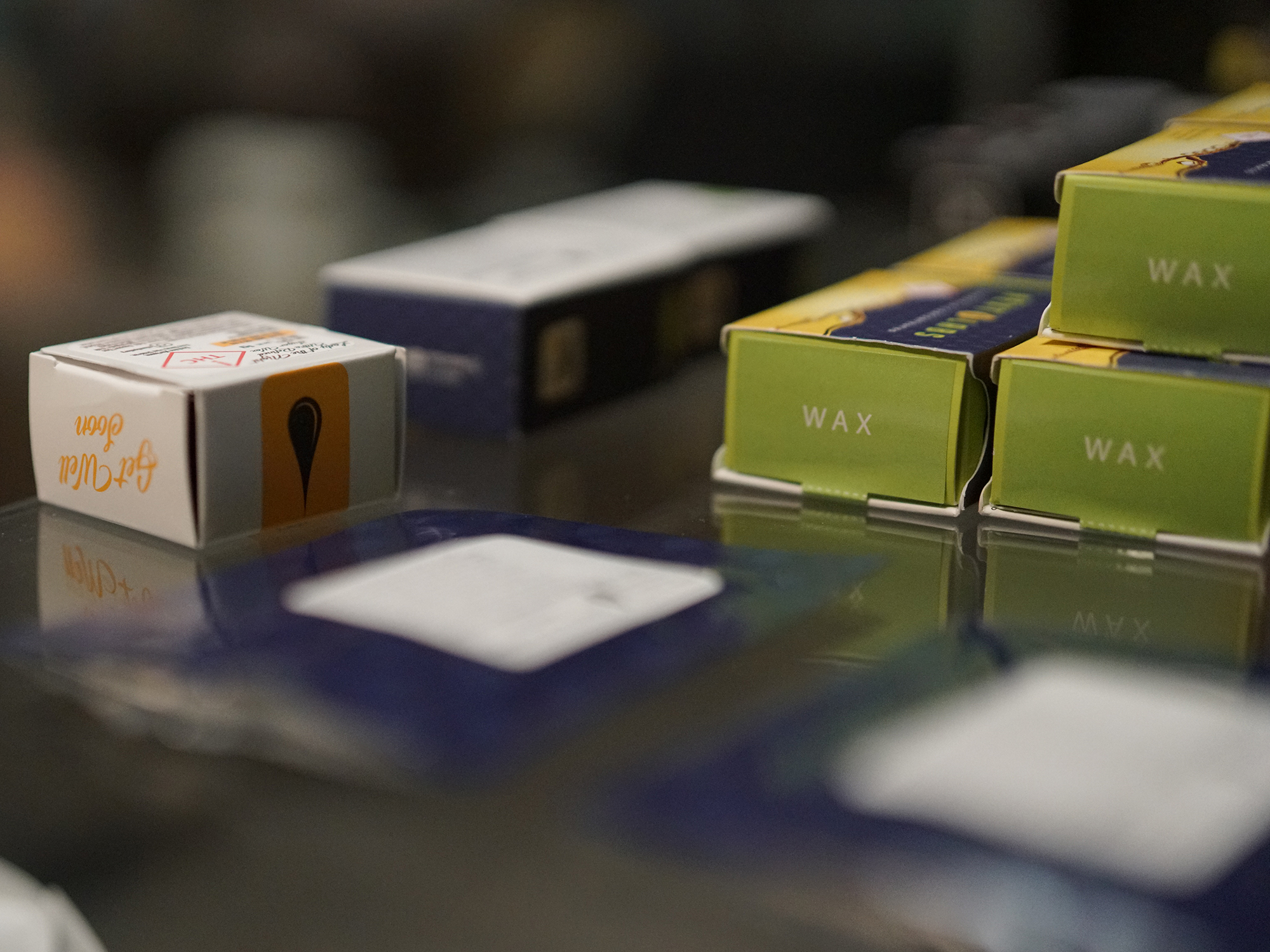Editor’s Note: This story was inspired by the New York Times piece, How to Buy Wine: Five Questions to Ask as part of our If Weed Was Legal column.
You don’t have to be a cannabis connoisseur to find your way around a dispensary. Just start your shopping experience knowing a few details about what it is you’re looking for, and don’t be afraid to trust in your budtender when you need more information. Here are some tips on how to buy cannabis.
Going into a recreational or medicinal cannabis dispensary can be an intimidating experience.
Numerous types of products from a variety of brands are displayed in all manner of ways, and often changes from state to state. The experience likens to entering a candy shop, with boxes of chocolates, gummies, and sometimes even a cooler of soda available for the choosing. The myriad of choices can be enough to overwhelm even the most experienced of imbibers.
Not only are there numerous ways to consume cannabis (i.e. vaping, smoking, eating), once you decide your form of consumption, you have to choose a brand, which can vary depending on what state you’re in, and the type of strain you want. The product you choose is also somewhat of an investment. Unlike a bottle or glass of wine at a restaurant, where you can often try a sample before making a commitment to buying, state laws don’t allow for customers to test cannabis merchandise on site. Though some dispensaries are gracious in their return and exchange policies, for the most part, what you see is what you get … or smoke.
Navigating today’s medicinal and legal terrain is possible for consumers of all levels, but it’s good to have some idea of what you’re looking for prior to buying weed. This helps to ensure you receive the healing effects you want from the plant product.
So we’ve narrowed it down for you, here are five questions to consider to help you navigate how to buy cannabis.
1. What kind of high am I looking for?
Most dispensaries still use the traditional Indica, Sativa, Hybrid model when asking customers what they’d like to try. Flower, gummies, vape cartridges, and sometimes sublinguals are labeled with one of these classifications. The general idea is that Indica is mellow, relaxing, and physically sedating. Sativa is more of a mind high, offering energy for physical activities. Hybrid falls somewhere in between. Indica and Sativa represent different strains, and they look different as fully-grown plants, but recent research shows the chemical components in both of these strains are not different enough to warrant such black and white classifications.
Jeffrey Raber, Ph.D., is a chemist and the founder and CEO of The Werc Shop, a medical cannabis analytical testing laboratory. He said the classifications of Indica, Sativa, and Hybrid are far too broad to follow.
“It’s too simplified to get you what you want,” says Raber, who is also a board member of the California Cannabis Manufacturers Association. “There probably are some indications to it, but it’s not an absolute, and it’s really unfair to new consumers. If we tell a new medical patient suffering from insomnia that Indica will help them sleep and then it keeps them awake, they may not be a cannabis consumer after that.”
Cannabis strains and how they make a person feel is a far more complex matter that we still don’t entirely understand according to Raber. The same exact item could even affect two people entirely differently. Still, the best two indicators right now on how a product will affect you are cannabinoids and terpenes.
Terpenes are chemical compounds found in many plants, not just cannabis, that help determine their smell and flavor. There are more than 200 known terpenes, but about eight are considered to be the most common: Limonene, Humulene, Alpha-Pinene, Beta Caryophyllene, Myrcene, Linalool, Pinene, and Terpinolene. While terpenes can be an incredibly helpful indicator of what kind of high you will get from a strain, listing these chemical compounds isn’t yet required in most states with legal medicinal and recreational cannabis.
Cannabinoids are a second indicator of how a strain will make you feel and most states require their listing on product labels. So what are cannabinoids? These are chemical compounds in the cannabis plant. There can be hundreds of them in just one strain, but the two most popular right now are THC and CBD. Cannabinoids such as CBG, CBN, THC-V, and THCA are becoming more well known, but you won’t see them listed on as many products yet.
Raber said looking at how much CBD vs. THC is in a product is a better indicator for how it will make you feel than Indica vs. Sativa. THC-dominant strains can have more psychoactive effects. CBD-dominant strains are said to provide pain and anxiety relief in a more clear-headed manner. A strain that is evenly balanced between THC and CBD will carry some of both effects. Knowing what type of high you desire is a big help in learning how to buy cannabis. To figure out what works best for you, Raber recommends experimenting.
“Try things on opposite ends of the spectrum and one in the middle to see what you like,” Raber said. “As a consumer, don’t be afraid of the experimentation. Start low and don’t overdo it.”


2. How do I want to ingest cannabis?
Smoking cannabis is no longer the sole way to get the high you’re looking for. There are now five main delivery methods to consider – flower, concentrates, edibles, topicals, and sublinguals – and most dispensaries sell a variety of all.
Similarly to finding the kind of high you want, there’s no precise rule of thumb to follow when considering types of ingestion. Everyone experiences the various types of consumption differently. Raber explains there is still a great deal of research that needs to be conducted on how different kinds of consumption affect us.
“Different routes of administration produce different types of molecules in the bloodstream,” he said. “You’ve got very different effect profiles.”
Still, there are some basic things to consider when looking at the five main delivery methods. If you’re simply seeking a pain reliever for your muscles or some problem area on your body, topicals offer localized benefits without the high. This is because the salve or lotion either doesn’t get into your bloodstream or the amount that goes in is so minimal it doesn’t cause a psychoactive effect, says Raber.
Vaping is better than combustion for inhalation due to using lower temperatures. Improved safety profile over combustion temperatures for sure. Now, evidence for “cleaner high” I’m not sure exactly what that means in a definition sense. It will surely be different, and I have heard some say it is preferable. Does that mean “cleaner”, impossible to say and basically that’s a bad slang term with poor definition for this use.
Edibles come in many forms, from gummies to soda to buttered popcorn, but they don’t provide instant gratification. At a minimum they can take 30 to 60 minutes (possibly longer) for your body to metabolize the cannabis and for you to feel the high. Although it is easy to buy large amounts of edibles (and to eat them because they’re so tasty), some professionals recommend starting with 10 mg or less if you’re new to this type of delivery.
Check out the SWEET JANE Edibles Guide for more information on the amount that’s right for you.
Sublinguals, which are administered in drops under the tongue, typically reach the bloodstream in 5 to 10 minutes. Flower involves the whole plant and it can be smoked in a pipe or joint, as well as vaporized via certain kinds of vaporizers. Concentrates, also called dabs, wax, shatter, and/or live resin, can be consumed via vaporizers, dab rigs, or a traditional bowl. Keep in mind that concentrates have much higher levels of cannabinoids than flower. Some professionals recommend starting with a low dose or to try another delivery method first if you’re a beginner.
3. How much do I want to spend?
The price of cannabis goes up depending on the strength of the product, the amount you’re buying, and the brand you choose. Cost may also vary from state to state, due to local and regional taxes, and market demand. Plus, prices may vary depending on what the individual business chooses to charge. To give you an idea of how much prices can vary, Statista.com estimates the average price per ounce of “high quality marijuana” ranged from $210.40 to $595.56 in October 2019, depending on the state it was sold in. Keep in mind, state laws also have a limit on the amount one can purchase in a given trip; in Colorado that is 1 ounce at recreational dispensaries. Because prices can vary so significantly, checking with your budtender at your dispensary on prices can help you budget accordingly.
If you’re eager to experiment, to find out what strains, brands, and cannabinoid percentages are best for you, it may help to start small and work your way up. There’s no reason to buy more than a couple grams of one strain if you aren’t sure you’ll enjoy it. The same goes for other forms of consumption like edibles, sublinguals, topicals, and concentrates. Although most of these come prepackaged with a set amount, you usually have some control over the amount you want to buy.
4. How do I figure out a cannabis brand’s consistency?
New cannabis brands are popping up constantly across adult-use and medical marijuana states. It’s hard to keep up with all of the new companies and how they grow their product. Consistency is important when trying to find a cannabis product you enjoy and want to continue using. This doesn’t just mean the consistency in branding and pricing, this means consistency in dosage, cannabinoids, terpenes, and overall taste and quality.
For example, a cannabis company makes a certain sublingual you really enjoy, but when they make the next batch, it makes you feel entirely different, even though the label on the bottle is the same. This means the company hasn’t figured out consistency in their product.
“Real good product consistency will still take a couple of years before we’re there,” says Raber. “But we don’t know what we have until things are consistent.”
Some brands have figured out ways to consistently produce the same product again and again. If you find a brand you like and a product that gives you the same kind of high each time, you’ll know to stick with that cannabis treat, just like a favorite bottle of wine.
So how do you find a consistent product?
You can start by researching a company and their practices. Raber recommends asking a budtender if they think a brand is consistent and why. Ask if they’ve ever tried the product over multiple batches and seen consistency. Ask if it always smells and tastes the same. Getting insight from a person who is likely to have tried certain brands numerous times can help you glean more insight on what kind of cannabis you’d like to purchase. And, if you’re not getting the answers you need, you can always try a little experimenting on your own.
“Don’t be afraid of a new brand, but maybe next time you get it, see if it’s consistent yourself,” Raber said.
5. What do you recommend?
Make sure to talk to your budtender when you’re not sure what you want. Asking questions about a cannabis shop’s selection is entirely allowed and encouraged in most cases. The budtenders behind the counter are often trained professionals, and it’s OK to put your faith in them. If you tell them what kind of high you’re looking for, they can point you toward recommendations. If you’re not even sure how you would like to ingest the cannabis, they may have tips and advice for that as well.
Raber recommends trying to stick with the same budtender. See what they like and if that corresponds with your favorite products. By getting an idea of the brands and products they prefer, as well as the terpenes and cannabinoids, you can see if you agree with their tastes or not.
“Get used to one budtender and find out if you’re the same or opposite from them,” he said. “That’s not a bad place to start.”
Ultimately, it’s just about having the confidence to ask the right questions, and to listen and learn. Cannabis professionals have chosen this field of work because they want to help others value cannabis like they do.
Photos by Christiann Koepke on Unsplash and Matt Ferro
